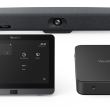Introduction
Hard water can wreak havoc in your home, leaving behind limescale buildup, reducing soap lather, and shortening the life of appliances. Installing a water softener package is the most effective solution for these issues. A well-designed complete water softener system bundles all the essentials—resin tank, brine tank, control valve, installation fittings, and salt—so you receive a turnkey solution. In this guide, we’ll dive into what a typical water softener package includes, how to choose the right system for your household, installation and maintenance tips, and the benefits of switching to soft water. By the end, you’ll see why a home water softener package is a wise investment for cleaner dishes, softer skin, and longer-lasting appliances.
1. Understanding Hard Water
What Is Hard Water?
Hard water contains high levels of dissolved minerals, primarily calcium and magnesium. These minerals:
- Form scale on faucets, showerheads, and the interiors of pipes.
- Hinder soap from lathering properly, leading to more detergent use.
- Clog water heaters and appliances, reducing efficiency and lifespan.
Why Hard Water Matters
- Spotty Dishes: Even after dishwasher cycles, glasses and silverware remain spotted or cloudy.
- Dry Skin and Hair: Soap scum left on skin and hair causes dryness and irritation.
- Higher Energy Bills: Scale buildup in water heaters requires more energy to heat water.
- Costly Repairs: Clogged pipes and scale-clogged appliances often need professional maintenance.
A complete water softener system swaps hardness minerals for sodium, preventing scale and delivering consistent, soft water throughout your home.
2. Key Components of a Water Softener Package
A standard water softener package for residential use includes:
2.1 Resin (Mineral) Tank
- Function: Contains ion-exchange resin beads that attract and hold calcium and magnesium ions.
- Size: Measured in grains of capacity (e.g., 24,000 to 64,000 grains). Higher grain ratings suit larger households or harder water.
- Design: A tall, cylindrical tank with a control valve mounted on top.
2.2 Brine (Salt) Tank
- Role: Stores salt or potassium pellets to regenerate the resin tank.
- Dimensions: Typically 10–20 inches wide and 30–40 inches tall.
- Accessories: Float assembly to prevent overflow and a drain line for brine discharge.
2.3 Control Valve and Head
- Purpose: Automates water flow during service and regeneration cycles.
- Types: Timer-based valves regenerate on a set schedule; demand-initiated regeneration (DIR) valves regenerate based on actual water usage.
- Interface: Digital or mechanical displays allow you to program hardness levels and regeneration times.
2.4 Bypass Valve and Installation Kit
- Bypass Valve: Lets you divert water around the softener for maintenance or emergencies.
- Installation Fittings: Flexible hoses, adapters, compression fittings, and mounting brackets.
- Drain Tubing: For carrying brine discharge to a floor drain or sump.
2.5 Water Softener Salt
- Options: Evaporated salt pellets (highest purity) or crystal salt. Potassium chloride is a salt-free alternative for sodium-restricted diets.
- Initial Supply: Many packages include enough salt to start the system.
3. Types of Water Softener Systems
3.1 Single-Tank, Ion-Exchange Systems
- Most common for homes.
- The resin tank handles both service and regeneration.
- Suitable for households with moderate water use.
3.2 Twin-Tank (Duplex) Systems
- Two resin tanks alternate between service and regeneration.
- Provides uninterrupted soft water—ideal for large families or heavy usage.
- Generally more expensive but offers continuous performance.
3.3 Salt-Free Conditioners (Descalers)
- Use template-assisted crystallization (TAC) to prevent scale but do not actually soften water.
- Require minimal maintenance (no salt) and have lower operating costs.
- Best for areas with mildly hard water or as a supplement to a standard softener.
3.4 Magnetic/Electronic Water Conditioners
- Clamp onto pipes and use electromagnetic fields to inhibit scale.
- Easy to install but results vary based on water chemistry and flow rates.
- Not a true softening solution—more of a scaling deterrent.
4. Choosing the Right Water Softener Package
4.1 Test Your Water Hardness
- Use an at-home test kit or send a sample to a lab.
- Hardness measured in grains per gallon (gpg):
- Soft: 0–3 gpg
- Moderately Hard: 4–7 gpg
- Hard: 8–12 gpg
- Very Hard: 13+ gpg
4.2 Calculate Household Water Demand
- Average per person: 75–100 gallons per day.
- Total demand: Multiply daily usage by household size.
- System capacity: Choose a grain capacity that exceeds daily hardness removal needs to minimize frequent regeneration.
4.3 Regeneration Frequency
- Timer-based systems regenerate on a set schedule (e.g., every three days).
- Demand-initiated systems regenerate only when needed, saving salt and water.
- Aim for regeneration every 5–7 days to balance efficiency and maintenance.
4.4 Space and Placement
- Brine tank requires about 2–4 square feet of floor space.
- Install near the main water line entry with access to power and a drain.
- Keep away from freezing temperatures or direct sunlight.
4.5 Budget Considerations
- Basic packages: $400–$600 USD for small systems (24,000–32,000 grain).
- Mid-range: $800–$1,200 for larger capacities and digital controls.
- Premium duplex systems: $1,500+ for continuous soft water supply.
- Factor in installation costs (if professional help is needed), typically $200–$500.
5. Installation Best Practices
5.1 Gather Your Tools
- Pipe cutter, adjustable wrench, Teflon tape, level, drill and anchors.
- Safety gear: goggles and gloves.
- Bucket and towels for water spills.
5.2 Plan Supply Shutoff
- Turn off main water supply and open a faucet to relieve pressure.
- Place the system’s bypass valve in bypass mode.
5.3 Install Bypass Valve
- Mount bypass valve to control head inlet/outlet ports.
- Ensure clear labeling for service vs. bypass positions.
5.4 Connect the Mineral Tank
- Attach inlet line to the bypass valve’s “in” port.
- Attach outlet line to the “out” port.
- Secure connections with plumber’s tape or compression fittings.
5.5 Set Up Drain Line
- Run drain tubing from the control valve’s drain outlet to a nearby drain.
- Secure tubing 4–5 feet above trap to prevent siphoning.
5.6 Install Brine Tank
- Position beside the resin tank.
- Connect brine line from “brine” port on control valve to brine tank.
- Fill with recommended salt type.
5.7 Program the Control Valve
- Input water hardness (gpg), regeneration time (off-peak hours), and regeneration frequency.
- Perform a manual regeneration cycle to verify correct operation.
5.8 Test for Leaks
- Turn water supply back on, check bypass valve movement, and monitor all fittings.
- Inspect drain flow during regeneration cycle to confirm proper drainage.
6. Maintaining Your Water Softener Package
6.1 Monthly Salt Checks
- Check salt level monthly; refill when salt falls below half the tank height.
- Break up any salt bridges (hardened salt dome) with a broom handle or salt rod.
6.2 Annual Brine Tank Cleaning
- Completely empty the tank, wash with mild soap and water, rinse thoroughly.
- Inspect for sediment or tank damage, then refill with fresh salt.
6.3 Resin Bed Cleaning
- Use a resin cleaner every 6 months to remove iron, tannins, or chlorine buildup.
- Follow product instructions for dosage and dosing schedule.
6.4 Valve and Control Inspections
- Check for proper valve seating, cycle smoothness, and error codes on digital heads.
- Lubricate O-rings and seals if recommended by the manufacturer.
6.5 Professional Servicing
- Schedule a service call every 2–3 years to inspect internal components, replace worn parts, and update settings.
7. Benefits of a Complete Water Softener System
7.1 Extended Appliance Lifespan
Soft water prevents scale buildup in:
- Water heaters
- Dishwashers
- Coffee makers
- Washing machines
7.2 Cleaner, Brighter Surfaces
Enjoy:
- Spot-free glasses and dishes
- Shiny faucets and fixtures
- Lint-free laundry and brighter fabrics
7.3 Softer Skin and Hair
With no mineral residue:
- Soap and shampoo lather more fully
- Skin feels smoother; hair becomes silkier
7.4 Energy Savings
Descaled water heaters heat more efficiently—saving up to 30% on energy consumption.
7.5 Environmental Advantages
- Less detergent and soap use
- Fewer harsh chemical cleaners for scale removal
- Longer-lasting appliances, reducing waste
Conclusion
A water softener package offers an all-in-one complete water softener system that tackles the common issues of hard water—from limescale and soap scum to damaged appliances and dry skin. By bundling a resin tank, brine tank, control valve, installation fittings, and initial salt supply, these packages deliver spot-free dishes, softer skin, energy savings, and longer appliance life without the hassle of sourcing components individually. When selecting a system, measure your water hardness, calculate household demand, and balance capacity with budget and space. Proper installation and diligent maintenance keep your system running smoothly for years. Invest in a home water softener package today, and transform your daily water experience—enjoy the comfort, savings, and peace of mind that come with soft water.












